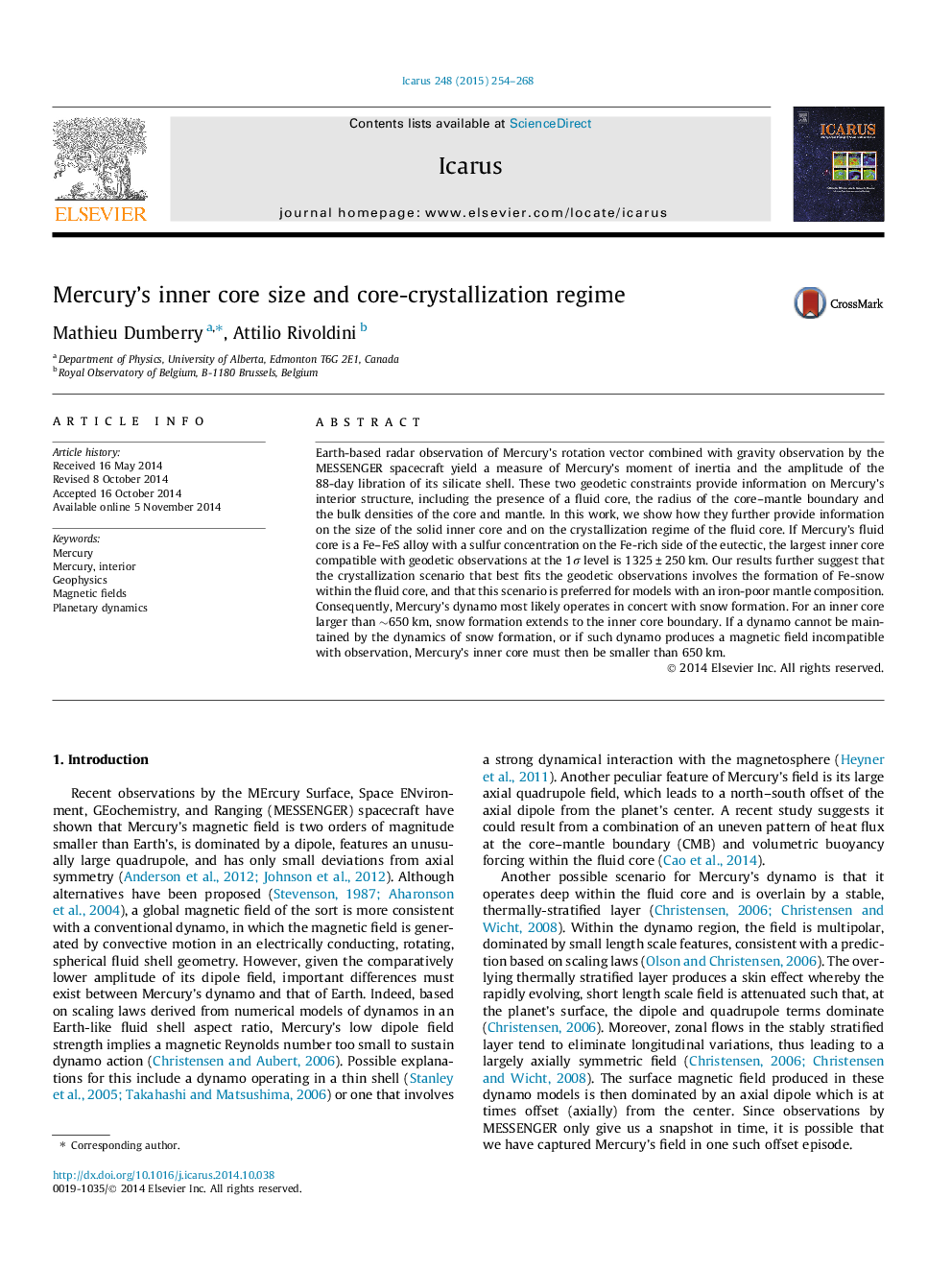| Article ID | Journal | Published Year | Pages | File Type |
|---|---|---|---|---|
| 8137114 | Icarus | 2015 | 15 Pages |
Abstract
Earth-based radar observation of Mercury's rotation vector combined with gravity observation by the MESSENGER spacecraft yield a measure of Mercury's moment of inertia and the amplitude of the 88-day libration of its silicate shell. These two geodetic constraints provide information on Mercury's interior structure, including the presence of a fluid core, the radius of the core-mantle boundary and the bulk densities of the core and mantle. In this work, we show how they further provide information on the size of the solid inner core and on the crystallization regime of the fluid core. If Mercury's fluid core is a Fe-FeS alloy with a sulfur concentration on the Fe-rich side of the eutectic, the largest inner core compatible with geodetic observations at the 1Ï level is 1325 ± 250 km. Our results further suggest that the crystallization scenario that best fits the geodetic observations involves the formation of Fe-snow within the fluid core, and that this scenario is preferred for models with an iron-poor mantle composition. Consequently, Mercury's dynamo most likely operates in concert with snow formation. For an inner core larger than â¼650 km, snow formation extends to the inner core boundary. If a dynamo cannot be maintained by the dynamics of snow formation, or if such dynamo produces a magnetic field incompatible with observation, Mercury's inner core must then be smaller than 650 km.
Related Topics
Physical Sciences and Engineering
Earth and Planetary Sciences
Space and Planetary Science
Authors
Mathieu Dumberry, Attilio Rivoldini,
